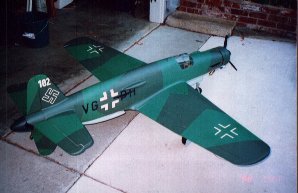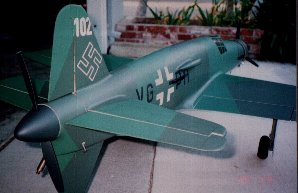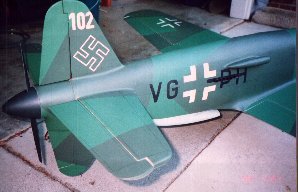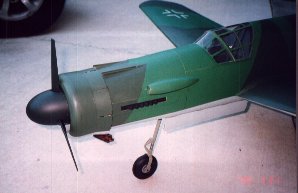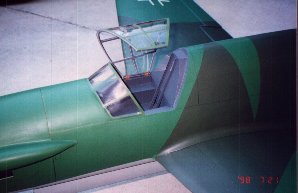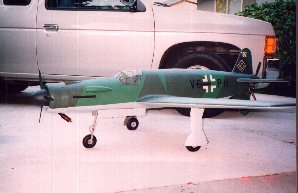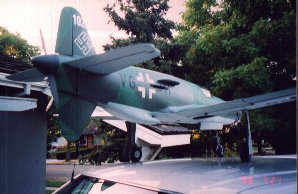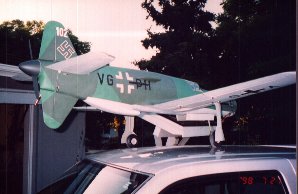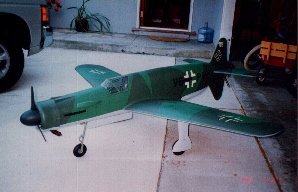
Overall view. As with my FW-190, enamels for plastic models were used:
Testor's Model Master - RLM 80 Olivgruen (olive green)
Floquil 303033 Medium Green (-34138) - RLM 83 Lichtgruen (light green)
Testor's Model Master - RLM 76 Lichtblau (light blue)
The Testor's colors were accurate, but the paint has a matte finish which I don't like. The FS numbers on these paints indicate they should be flat, but they're not.
The Floquil paint is much better - it covers better and the finish is dead flat.
